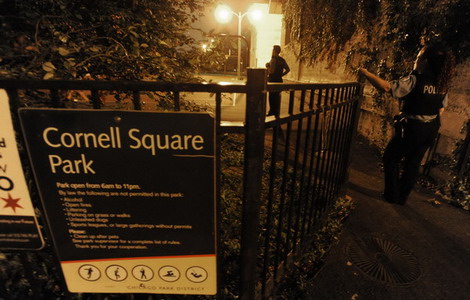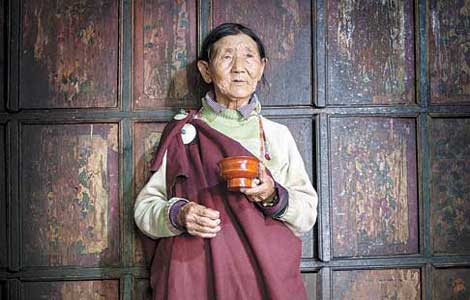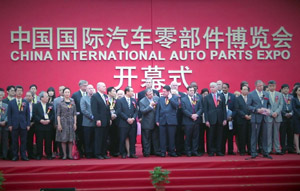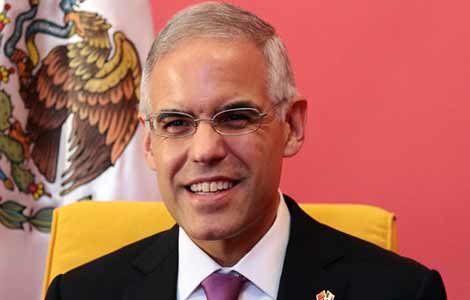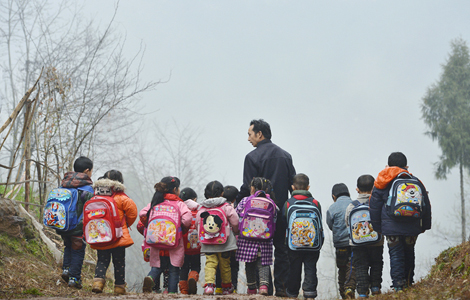Ancient site helps lift thousands out of poverty
Updated: 2013-09-20 23:57
By LI WENFANG in Guangzhou (China Daily)
|
||||||||
Peng Yinyu got to know her husband Tang Gan Zhusan when they worked at a textile factory in Guangzhou in 2000.
Three years later, the couple decided to live in Tang’s hometown in the Liannan Yao autonomous county, one of the poorest areas in Guangdong province.
They bought a van and opened a store selling local products, including mushrooms, herbs and handicrafts, to attract tourists to the ancient houses of the Yao ethnic people in the village of Nangang in Sanpai, a town in Liannan, which dates back more than 1,000 years.
On Sept 10 this year, the county government competed with other local authorities in Guangdong and won a 4 million yuan ($650,000) poverty-relief tourism fund from the provincial government.
In 2002 and 2003, the county received a total of 4 million yuan in poverty-relief funding from the provincial government to renovate the ancient dwellings in Nangang to attract more tourists.
Liannan is the only place in China inhabited by a large number of Paiyao people, a branch of the Yao ethnic group. The branch got its name for building houses in rows, or pai, on mountain slopes.
Nangang used to have more than 700 houses in rows, with more than 7,000 people living in them, at its peak in the early Qing Dynasty (1644-1911).
Many people moved down the mountain to make life easier for themselves, but about 200 still live in the row-buildings in Nangang, including Peng and Tang, with 368 houses preserved.
The couple borrowed some money from their parents to renovate their row-house last year to provide accommodation and dining for tourists, earning about 30,000 yuan from tourism in 2012.
"We eat what we grow, but depend on tourism for other parts of our livelihood," said Peng, who has a 7-year-old daughter and is expecting another child.
"More and more tourists are coming, mostly from cities like Guangzhou, Shenzhen, Zhuhai and Foshan. Many have come a lot of times.
"You can make 2,000 to 3,000 yuan a month working in a factory, but then you have to pay for housing and food at higher prices. By working here, we have more money left."
The county received 500,000 yuan in 2004 and 600,000 yuan in 2006 from the provincial government to give the row-houses in Nangang a facelift.
Investment on the site and related infrastructure, such as a road leading to the area, has totaled more than 30 million yuan, including some funding from the county government.
More than 100,000 tourists visited it last year, bringing in about 40 million yuan, said Deng Haifeng, director of the county’s tourism bureau.
The production and sale of local products, including ethnic drums, embroidery and farm produce, has been promoted, he said. The site has helped lift more than 20,000 in Sanpai out of poverty, and employs more than 100 Yao people in ethnic singing and dancing performances and site management.
The per capita annual income of Yao ethnic people in Nangang rose to 4,288 yuan last year from 1,995 yuan in 2003.
Lei Yuchun, the county‘s Party chief, said that blessed with a rich Yao ethnic culture, tourism holds the key to poverty-relief work in Liannan.
The funding from the provincial government paved the way for local tourism, he said, adding that every 1 yuan of government investment usually leads to another 10 yuan in investment from other parties.
It is planned to develop more row-houses into tourist attractions, Lei said.
Tang Haining, son of a Yao ethnic singer, said that with young people admiring modern culture, it has been difficult to preserve ethnic ways.
But with the tourism boom, more young people are learning about ethnic culture and working in the tourism sector, helping to preserve the culture and its appeal to visitors, he said.
Most Viewed
Editor's Picks

|
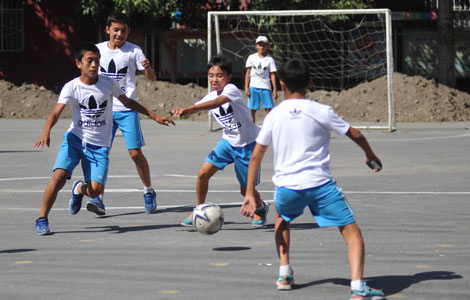
|

|

|

|

|
Today's Top News
5.1-magnitude quake hits NW China
Car bombings death toll rises to 65 in Yemen
UN lauds China on food waste efforts
Chinese firms face trust deficit
13 injured in Chicago park shooting
Wang and Kerry meet in DC
Belgian zoo owner set to host Chinese pandas
Trending news across China
US Weekly

|

|
